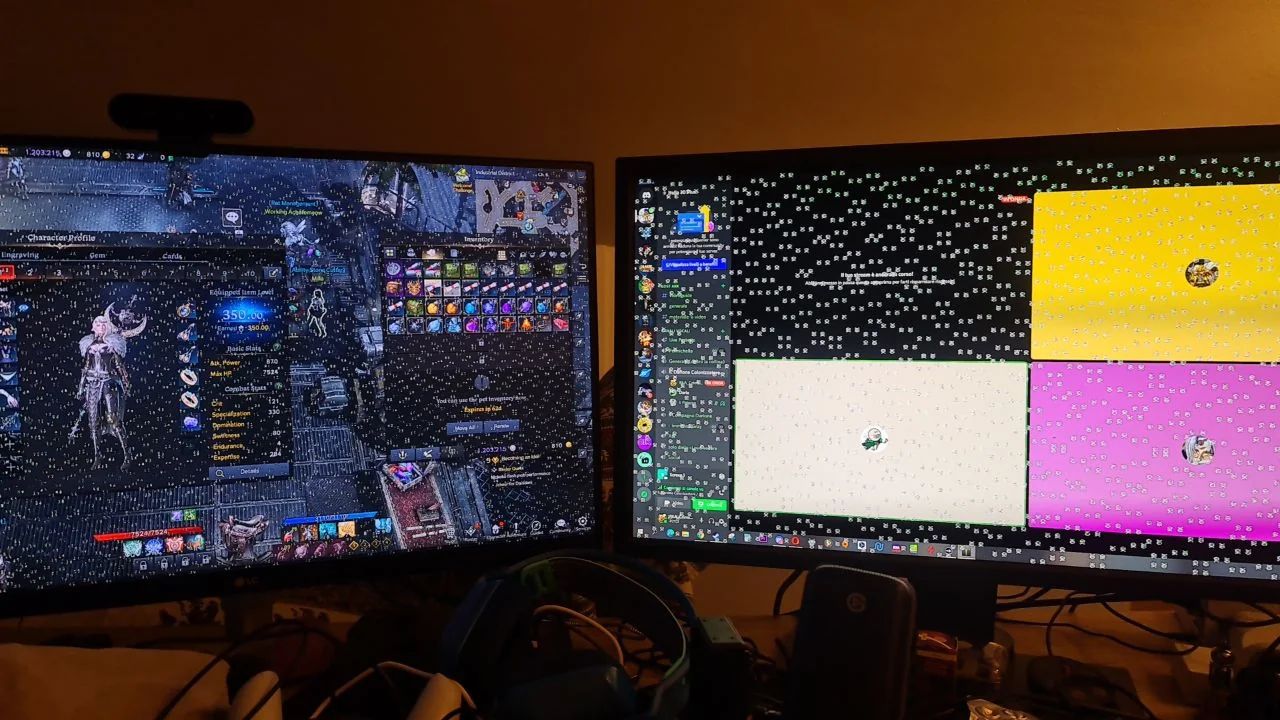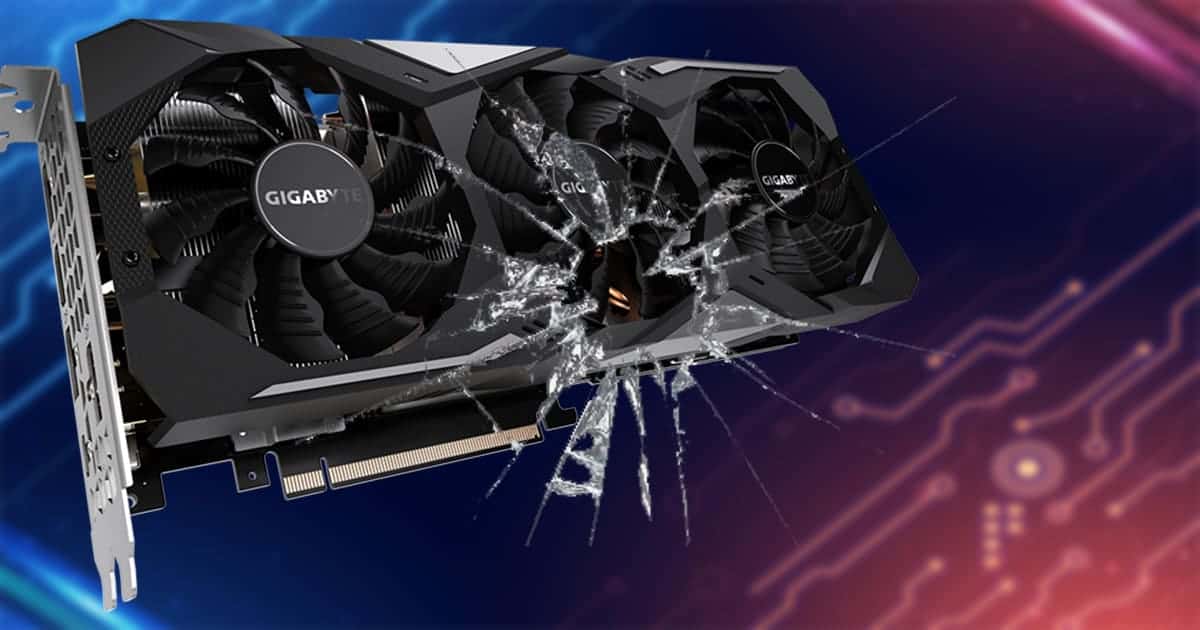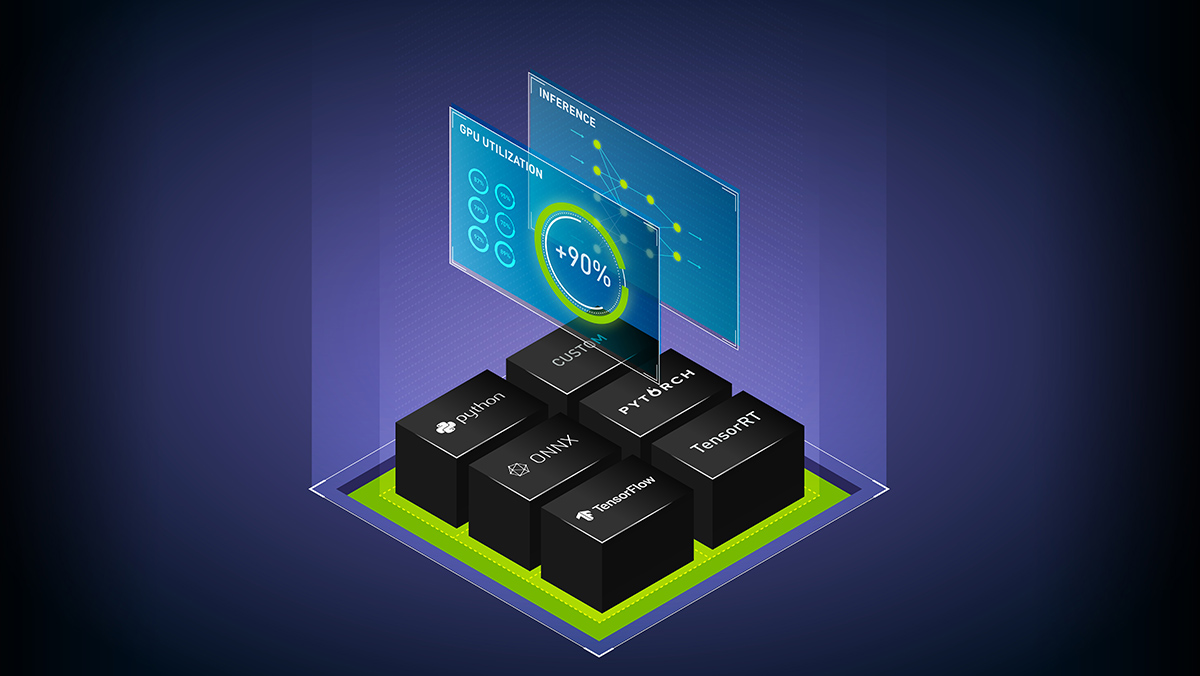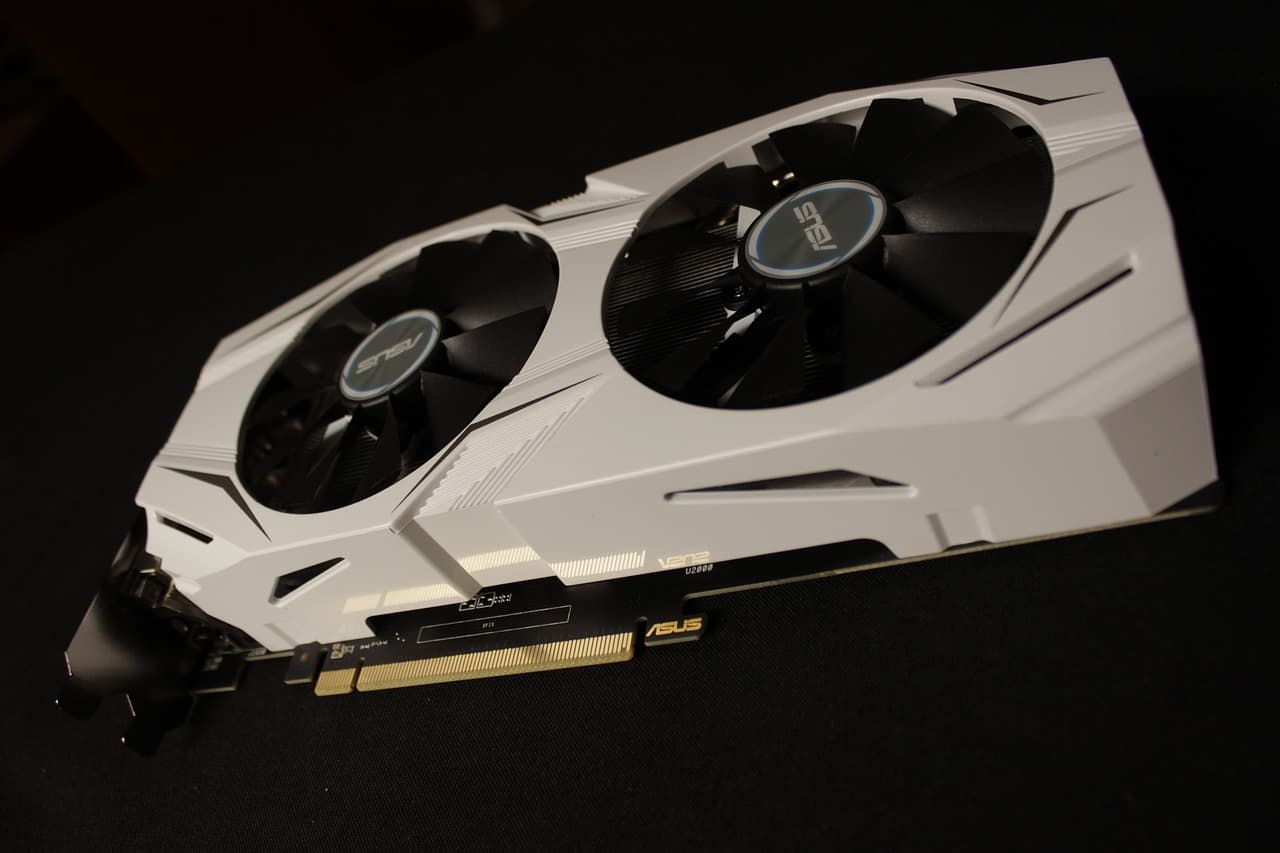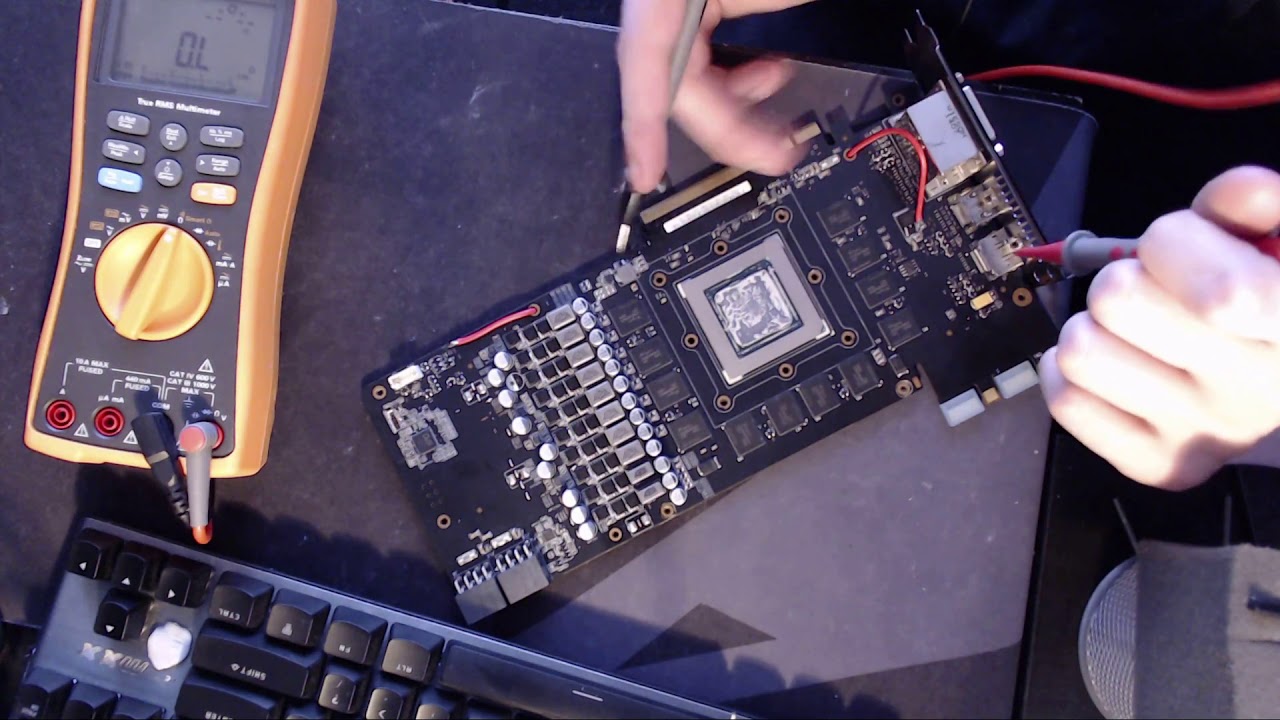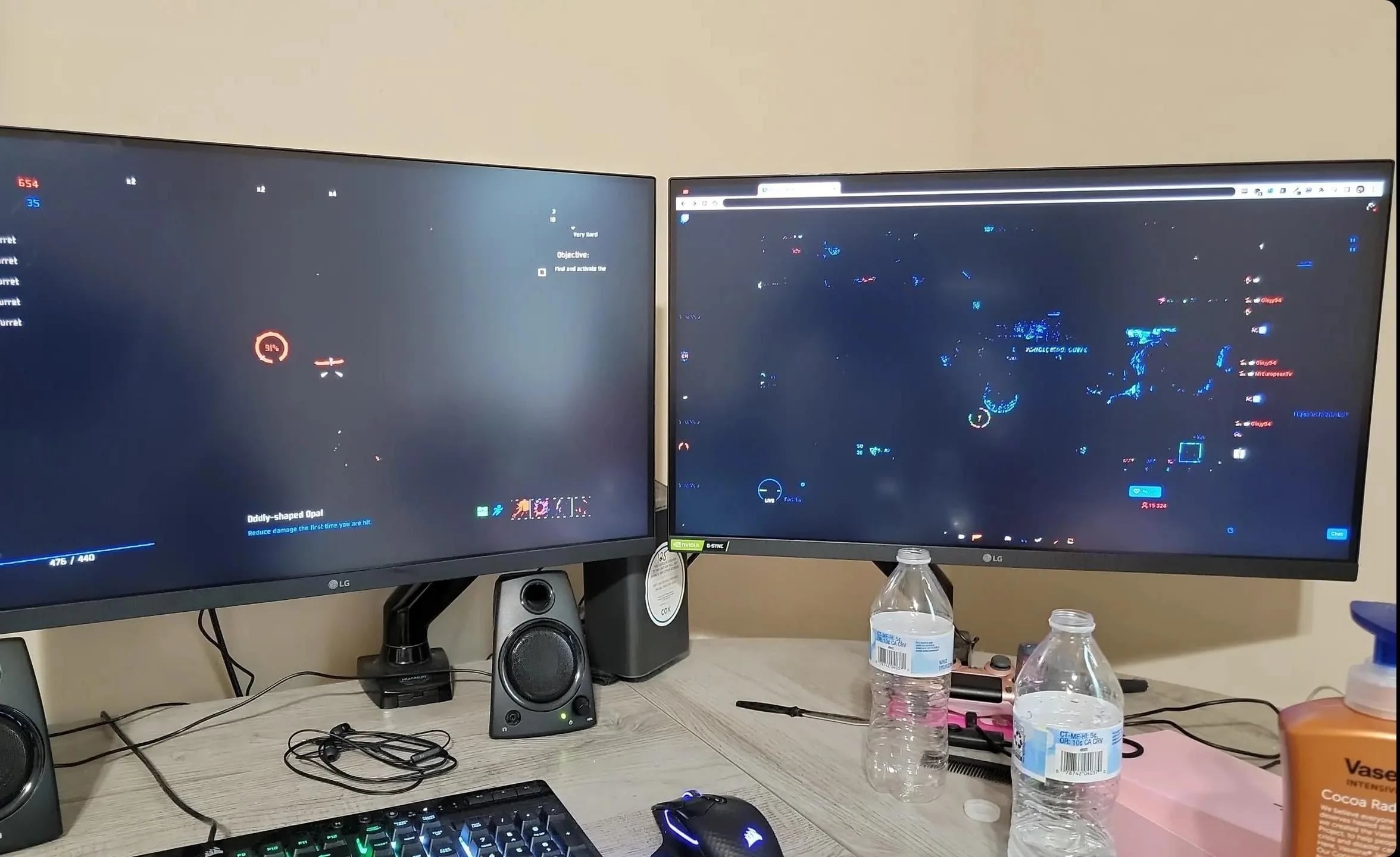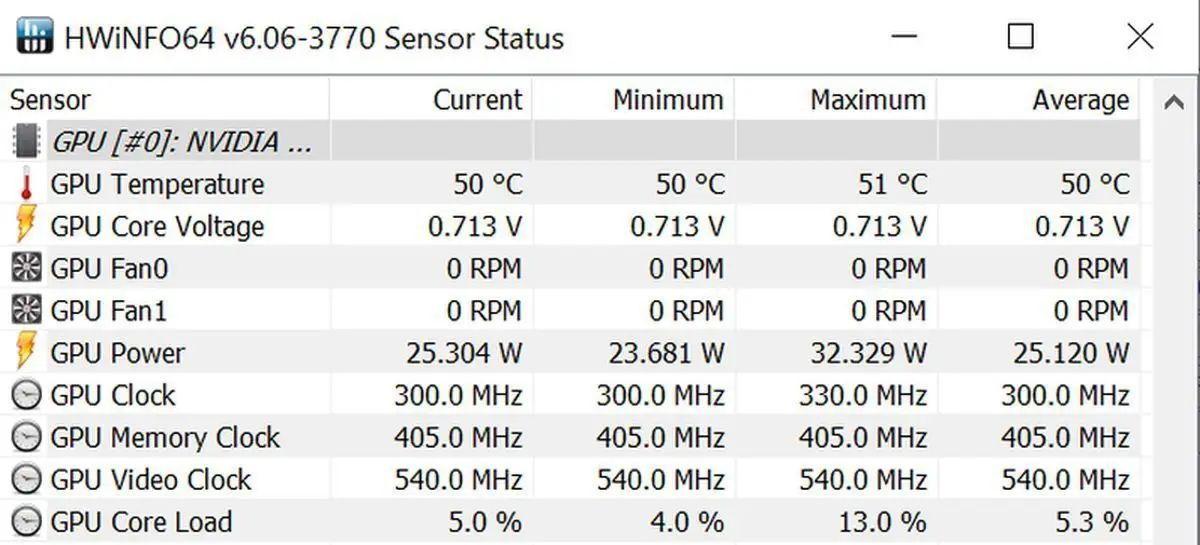Why is my GPU crashing?
Are you experiencing frequent crashes while playing games on your computer? If so, it could be due to issues with your GPU (Graphics Processing Unit). The GPU is responsible for rendering graphics and images on your screen, and any problems with it can result in crashes and interruptions during gameplay.
There are several potential reasons why your GPU may be crashing, and it’s important to identify the underlying cause to find an effective solution. Let’s explore some common factors that can lead to GPU crashes:
- Overheating issues: GPUs generate a significant amount of heat while running graphics-intensive applications. If your GPU overheats, it can cause crashes or automatic shutdowns to prevent damage.
- Insufficient power supply: GPUs require a stable and adequate power supply to function properly. If your power supply is faulty or unable to provide enough power, your GPU may crash during high-demand gaming sessions.
- Outdated or incompatible drivers: GPU drivers serve as the communication bridge between your graphics card and the operating system. Outdated or incompatible drivers can result in stability issues and crashes.
- Hardware defects or faults: Sometimes, GPUs may have manufacturing defects or physical faults that can cause crashes. These defects can range from faulty memory modules to damaged circuitry.
Understanding the potential causes of GPU crashes is the first step towards resolving the issue. In the next section, we will explore some effective solutions to fix GPU crashing problems and get you back to enjoying your gaming sessions without interruptions.
Common reasons for GPU crashes while playing games
Experiencing GPU crashes during gaming sessions can be frustrating. To help you troubleshoot and resolve these issues, let’s delve into some common reasons behind GPU crashes while playing games:
- 1. Overheating: Gaming often pushes GPUs to their limits, generating excessive heat. If your GPU’s temperature exceeds its safe operating limit, it may crash to prevent damage.
- 2. Insufficient power supply: Gaming requires a substantial amount of power, and if your GPU doesn’t receive enough power, it may crash. Inadequate power supply can be caused by a faulty power connector, weak power supply unit (PSU), or overclocking settings.
- 3. Outdated or incompatible drivers: Graphics card drivers need to be up to date to ensure compatibility with the latest games. Outdated or incompatible drivers can cause crashes when running newer games or specific graphics-intensive tasks.
- 4. Faulty hardware: Defective or faulty hardware components can trigger GPU crashes. This could be a malfunctioning graphics card, faulty memory modules, or even a damaged PCIe slot.
- 5. Overclocking instability: Overclocking your GPU to gain extra performance can make it more prone to crashes. Unstable overclocking settings can result in frequent crashes during gaming sessions.
- 6. Memory issues: Inadequate memory or faulty VRAM modules can cause unexpected crashes. Insufficient memory may result in games struggling to load high-resolution textures, leading to crashes or freezing.
- 7. Software conflicts: Conflicts between different software applications, such as anti-virus programs or certain system utilities, may cause GPU crashes. It’s important to ensure that all software is up to date and compatible with your GPU.
Understanding the common reasons for GPU crashes can help you pinpoint the specific cause and find the most appropriate solution. In the following section, we will explore various methods to fix GPU crashing issues and enhance your gaming experience.
Overheating issues
One of the primary causes of GPU crashes during gaming is overheating. As your graphics card works hard to render high-resolution graphics and process complex calculations, it generates a significant amount of heat. If this heat is not effectively dissipated, it can lead to overheating and subsequent crashes.
Several factors can contribute to overheating:
- Dust and debris: Over time, dust and debris can accumulate on your GPU’s cooling components, such as the fan and heat sink. This buildup restricts airflow and hampers the cooling performance, causing the GPU to overheat.
- Inadequate airflow: Your computer’s case may not have sufficient airflow to dissipate the heat produced by the GPU. This can be due to cramped cable management, improper fan placements, or a lack of sufficient ventilation.
- Insufficient thermal paste: The thermal paste applied between the GPU die and the cooling component helps transfer heat efficiently. If the thermal paste is old, dried out, or not evenly applied, it can impede heat dissipation and contribute to overheating.
- Faulty cooling system: In some cases, the cooling system of your GPU itself may be faulty. This could include issues with the fan, heat sink, or coolant leakage in liquid cooling systems.
To address overheating issues and prevent GPU crashes, there are several steps you can take:
- Clean the GPU: Regularly clean your GPU and its cooling components, such as the fan and heat sink, to remove dust and debris. Use compressed air or a soft brush to gently clean the components, avoiding any excessive force that could damage them.
- Ensure proper airflow: Make sure your computer case has proper ventilation and sufficient airflow. Keep cables organized and away from critical airflow paths. Consider adding additional case fans or upgrading your cooling system if necessary.
- Check thermal paste: Check the condition of the thermal paste on your GPU. If it appears dried out or unevenly applied, consider reapplying a fresh layer. Refer to your GPU manufacturer’s guidelines for proper application.
- Monitor GPU temperature: Use monitoring software to keep an eye on your GPU’s temperature during gaming sessions. If it consistently reaches high temperatures, consider adjusting your game settings to reduce GPU load or investing in aftermarket cooling solutions.
By addressing overheating issues, you can significantly reduce the chances of GPU crashes during gaming. However, if the crashes persist, it’s essential to explore other potential causes and solutions, which will be discussed in the following sections.
Insufficient power supply
Another common reason for GPU crashes during gaming is an insufficient power supply. Gaming requires a considerable amount of power, and if your GPU doesn’t receive enough power, it can result in instability and crashes.
Here are some factors that can contribute to insufficient power supply:
- Faulty power connectors: Loose or damaged power connectors can cause intermittent power supply to the GPU, triggering crashes during high-demand gaming sessions.
- Weak power supply unit (PSU): If your PSU cannot deliver enough power to meet the demands of your GPU and other components, it can lead to voltage drops and crashes. A low-quality or underpowered PSU is often the culprit.
- Overclocking settings: Pushing your GPU beyond its factory settings through overclocking can increase its power requirements. If your power supply is unable to handle the increased power demands, it can result in crashes.
To ensure your GPU is receiving sufficient power and prevent crashes, consider the following steps:
- Check power connectors: Inspect the power connectors from your power supply to your GPU. Ensure they are securely plugged in and that there are no visible signs of damage or overheating.
- Upgrade your power supply: If you suspect that your PSU is the culprit behind the insufficient power supply, consider upgrading to a higher-wattage and more reliable power supply. Be sure to choose a PSU that is compatible with your system’s requirements.
- Avoid excessive overclocking: While overclocking can provide performance boosts, it also increases power consumption. If you’re experiencing crashes during overclocked gaming sessions, consider dialing back the overclocking settings to reduce power demands.
- Distribute power efficiently: If you have multiple power-hungry components in your system, distribute the power load evenly across multiple rails of your PSU. This can help prevent power congestion and ensure each component receives sufficient power.
By addressing insufficient power supply issues, you can minimize the risk of GPU crashes during gaming. However, if crashes persist, it’s essential to investigate other potential causes and solutions, which will be discussed in the following sections.
Outdated or incompatible drivers
Outdated or incompatible drivers can often be the cause of GPU crashes while playing games. Graphics card drivers serve as the communication bridge between your GPU and the operating system, ensuring proper functionality and compatibility with software applications.
Here are some issues that can arise due to outdated or incompatible drivers:
- Crashes with new games: If your graphics card drivers are not up to date, they may not be optimized to run the latest games. This can result in crashes or instability during gameplay.
- Compatibility issues: Incompatible drivers may conflict with other software components, causing crashes or unexpected behavior. This can occur when using outdated drivers or when a new driver update is not compatible with your system configuration.
- Stability problems: Outdated drivers may lack important bug fixes and stability improvements implemented in newer versions. This can lead to crashes and other performance issues.
To address issues related to outdated or incompatible drivers, follow these steps:
- Update your drivers: Visit the manufacturer’s website for your graphics card and download the latest drivers for your specific model. Install the updated drivers, following the instructions provided by the manufacturer.
- Use driver update software: Alternatively, you can use driver update software to automatically scan for and install the latest drivers for your GPU. These tools can simplify the process and ensure you have the most up-to-date drivers.
- Uninstall and reinstall drivers: If you’re facing persistent crashes, try uninstalling your current drivers completely and then reinstalling the latest version. This can help resolve any conflicts or corrupted files that may be causing the crashes.
- Disable automatic driver updates: Sometimes, automatic driver updates from the operating system can cause compatibility issues. In such cases, consider disabling automatic driver updates and manually installing drivers from the manufacturer’s website.
By keeping your GPU drivers up to date and ensuring compatibility, you can minimize the chances of crashes and enjoy a smoother gaming experience. If crashes still occur, it’s essential to explore other potential causes and solutions, which will be discussed in the following sections.
Hardware defects or faults
Hardware defects or faults can be another underlying cause of GPU crashes while playing games. Despite quality control measures, manufacturing imperfections can occasionally occur, leading to issues with the graphics card.
Here are some hardware-related factors that can contribute to GPU crashes:
- Faulty graphics card: A defective graphics card can exhibit various problems, including crashes, artifacts on the screen, or system instability. These issues can stem from manufacturing defects or physical damage to the GPU.
- Malfunctioning memory modules: Faulty or malfunctioning memory modules on the graphics card can lead to crashes and system instability. These issues can arise due to manufacturing defects or poor-quality components.
- Damaged PCIe slot: The PCIe slot on the motherboard is responsible for connecting the graphics card to the system. If the PCIe slot is damaged or not functioning correctly, it can cause crashes or prevent the GPU from working altogether.
While hardware defects are beyond the user’s control, there are steps you can take to identify and address them:
- Test the graphics card in another system: If possible, test the graphics card in another computer to see if the crashes persist. If they do, it is likely that the graphics card itself is at fault.
- Contact the manufacturer: If your GPU is under warranty and you suspect it has a hardware defect, contact the manufacturer’s support for assistance. They may be able to troubleshoot the issue further or provide a replacement if necessary.
- Inspect the PCIe slot: Examine the PCIe slot on your motherboard for any visible damage or dirt. If you notice any issues, such as bent pins or debris, it may be necessary to contact a professional or consider replacing the motherboard.
Please note that diagnosing and addressing hardware defects may require expert assistance. If you suspect hardware issues are causing GPU crashes, it is advisable to seek professional help or contact the manufacturer for guidance.
How to fix GPU crashing issues
Experiencing GPU crashes while playing games can be frustrating. However, there are several steps you can take to resolve these issues and enjoy a stable gaming experience. Here are some effective solutions:
- Update your graphics card drivers: Keeping your GPU drivers up to date ensures compatibility with the latest games and fixes any known issues. Visit the manufacturer’s website to download and install the latest drivers for your specific model.
- Clean the GPU and ensure proper cooling: Dust and debris can accumulate on your GPU’s cooling components, leading to overheating and crashes. Regularly clean the fan and heat sink using compressed air or a soft brush. Ensure proper airflow inside your computer case and consider upgrading cooling solutions if needed.
- Check your power supply: Inadequate power supply can cause GPU crashes. Ensure that your power connectors are secure and not damaged. Consider upgrading to a higher-wattage power supply if necessary.
- Monitor your GPU temperature: Use monitoring software to keep an eye on your GPU’s temperature. If it consistently reaches high temperatures, adjust game settings to reduce GPU load or invest in aftermarket cooling solutions.
- Test your hardware for defects: If all else fails, consider testing your graphics card in another system or seeking professional assistance to diagnose any hardware defects or faults.
Please note that these solutions are meant to address common causes of GPU crashes. However, if the crashes persist even after attempting these fixes, it may be necessary to consult with a computer technician or contact the manufacturer for further assistance.
Update your graphics card drivers
One of the most effective ways to fix GPU crashing issues is to update your graphics card drivers. Graphics card drivers serve as the crucial software interface between your GPU and the operating system, ensuring proper functionality and compatibility with games and other applications.
Here’s why updating your graphics card drivers is essential:
- Improved performance: Driver updates often include optimizations and improvements that can enhance the performance of your GPU. This can result in smoother gaming experiences and fewer crashes.
- Compatibility with new games: Game developers frequently release updates and patches that require the latest drivers to run smoothly. Updating your graphics card drivers ensures that your GPU is compatible with the latest game releases, reducing the chances of crashes.
- Bug fixes and stability improvements: Driver updates also address known issues and bugs found in previous versions. By installing the latest drivers, you can benefit from stability improvements, potentially resolving crashing problems.
To update your graphics card drivers, follow these steps:
- Identify your graphics card manufacturer and model. This information can usually be found in your system settings or by checking the label on your GPU.
- Visit the manufacturer’s website. Most manufacturers provide driver downloads directly on their websites. Look for the “Support” or “Downloads” section.
- Search for your specific graphics card model and the appropriate driver for your operating system. Download the latest driver version available.
- Run the driver installer and follow the on-screen instructions to update your graphics card drivers. This typically involves accepting the license agreement and selecting the installation location.
- Restart your computer to complete the driver installation process.
Alternatively, you can use driver update software to automate the process. These tools scan your system, detect outdated drivers, and download and install the latest versions for you.
By regularly updating your graphics card drivers, you ensure that your GPU is equipped with the latest optimizations and fixes, reducing the likelihood of crashes and improving your overall gaming experience.
Clean the GPU and ensure proper cooling
Maintaining a clean and well-cooled GPU is crucial for preventing crashes while playing games. Over time, dust and debris can accumulate on the cooling components of your GPU, hindering its ability to dissipate heat effectively. This can lead to overheating and subsequent crashes. Taking steps to clean your GPU and ensure proper cooling can help resolve these issues.
Here’s what you can do:
- Clean the fan and heat sink: Use compressed air or a soft brush to gently remove dust and debris from the fan blades and heat sink. Be careful not to apply excessive force or damage any components.
- Check for clogged vents: Locate the vents on your computer case that allow airflow to your GPU. Make sure they are not obstructed by dust, objects, or cables. Clear any blockages to improve airflow.
- Ensure proper cable management: Organize cables inside your computer case to minimize clutter and improve airflow. Proper cable management helps prevent cables from obstructing the GPU’s cooling components.
- Consider aftermarket cooling solutions: If your GPU consistently runs hot despite cleaning, you may benefit from installing additional cooling solutions. This could include adding case fans, installing an aftermarket GPU cooler, or utilizing liquid cooling systems.
- Monitor GPU temperature: Use software utilities to monitor the temperature of your GPU during gaming sessions. If it consistently reaches high temperatures, it’s a sign that your cooling solution may need further improvement.
By cleaning your GPU regularly and maintaining proper cooling, you can prevent overheating and crashes. Remember to perform these maintenance tasks with caution and refer to your GPU manufacturer’s guidelines for specific cleaning instructions.
However, if cleaning the GPU and ensuring proper cooling doesn’t resolve the crashing issues, it’s important to explore other potential causes and solutions, which will be discussed in the following sections.
Check your power supply
Insufficient power supply can often be the cause of GPU crashes while playing games. Your GPU requires a stable and adequate power supply to function properly, and any issues with power delivery can result in instability and crashes. To resolve these issues, it’s important to check your power supply.
Here are a few steps you can take to ensure your power supply is not causing GPU crashes:
- Check power connectors: Verify that all power connectors from your power supply are securely plugged into the GPU. Loose or improperly connected cables can cause intermittent power supply and lead to crashes during high-demand gaming sessions.
- Inspect power cables: Examine the power cables themselves for any visible signs of damage such as frayed wires or bent pins. Faulty power cables can disrupt power delivery to the GPU and lead to crashes.
- Upgrade your power supply: If you suspect that your current power supply is not sufficient for your GPU’s power requirements, consider upgrading to a higher-wattage power supply. This ensures that your GPU is receiving the necessary power and reduces the chances of crashes.
- Consider power supply stability: Fluctuations and inconsistencies in power supply voltage can cause GPU crashes. Using a high-quality power supply with stable voltage output can help prevent instability and crashes.
If you are unsure about the capability or health of your power supply, you may want to consult with a knowledgeable technician or consider using a power supply tester to ensure it is functioning correctly.
It’s worth noting that overclocking your GPU can increase power consumption and put additional strain on your power supply. If you are overclocking your GPU and experiencing crashes, try dialing back the overclocking settings to reduce power demands on the power supply.
By checking your power supply and ensuring it is providing sufficient and stable power to your GPU, you can minimize the risk of crashes and enjoy smoother gaming experiences.
Monitor your GPU temperature
Monitoring the temperature of your GPU is essential to prevent crashes while playing games. When your graphics card operates under heavy loads, it generates heat. If this heat is not effectively managed, it can lead to overheating and subsequent crashes. By monitoring your GPU temperature, you can take appropriate measures to keep it within safe limits.
Here are some steps to monitor and manage your GPU temperature:
- Utilize monitoring software: Install monitoring software for your GPU that provides real-time temperature readings. These utilities often come with additional features such as fan speed control and temperature alerts.
- Observe normal temperature ranges: Familiarize yourself with the normal operating temperature range for your specific GPU model. This information can usually be found on the manufacturer’s website or in the product documentation.
- Ensure proper airflow: Make sure your computer case has adequate airflow to dissipate the heat generated by your GPU. Keep the area around the GPU clear of obstructions and ensure that case fans are functioning properly.
- Clean the GPU: Regularly clean the cooling components of your GPU, such as the fan and heat sink, to remove dust and debris. Accumulated dust can reduce cooling efficiency and lead to higher temperatures.
- Consider fan speed control: Some GPUs allow for manual adjustment of fan speeds. Increasing fan speed can improve cooling efficiency, but it may result in increased fan noise. Strike a balance between cooling performance and noise levels that suits your needs.
- Adjust game settings: Graphics settings in games impact the GPU load and temperature. If your GPU consistently runs hot, consider lowering graphics settings such as resolution, anti-aliasing, or shadow quality to reduce the temperature and alleviate the risk of crashes.
By actively monitoring your GPU temperature and taking appropriate measures to maintain it within safe limits, you can prevent crashes caused by overheating. If you consistently experience high temperatures even after undertaking these measures, further investigation of the cooling system or consultation with a professional technician may be necessary.
Test your hardware for defects
If you are still experiencing GPU crashes despite troubleshooting and implementing the previous solutions, it may be necessary to test your hardware for potential defects. Faulty hardware components can cause crashes during gaming sessions and disrupt your overall system stability. Conducting hardware tests can help identify if there are any issues that need to be addressed.
Here are recommended steps to test your hardware for defects:
- Test the GPU in another system: If possible, try installing your GPU in another computer to see if the crashes persist. If the crashes continue, it is likely that the GPU itself is defective and needs to be replaced or repaired.
- Use benchmarking and stress testing software: Run benchmarking and stress testing software specifically designed for GPUs. These tests can push your GPU to its limits and potentially uncover any underlying hardware defects or stability issues.
- Check system RAM: Faulty RAM can impact the stability of your system, including your GPU. Use dedicated software or built-in Windows memory diagnostics to test the integrity of your system’s RAM modules.
- Inspect the PCIe slot: Visually examine the PCIe slot on your motherboard to ensure there are no physical damages or loose connections. Insufficient contact between the GPU and the slot can lead to crashes.
- Consider professional help: If you are unsure how to proceed or do not have the necessary tools for hardware testing, it is recommended to seek assistance from a professional technician or contact the corresponding hardware manufacturer for support.
Conducting hardware tests can help pinpoint any potential defects and provide valuable information when seeking assistance or warranty claims from hardware manufacturers. It’s important to remember that diagnosing and addressing hardware defects can be complex, and professional help may be necessary for accurate identification and resolution.
Conclusion
Experiencing GPU crashes while playing games can be frustrating, but with the right troubleshooting steps, you can address the underlying issues and enjoy stable gaming sessions. In this article, we explored some common reasons for GPU crashes, including overheating, insufficient power supply, outdated or incompatible drivers, and hardware defects. We also provided solutions for each of these issues.
To recap, it’s important to keep your GPU clean and ensure proper cooling to prevent overheating. Checking your power supply and updating your graphics card drivers are crucial steps in maintaining stability. Additionally, testing your hardware for defects can help identify any underlying issues that may be causing crashes.
However, if you have tried these solutions and continue to experience GPU crashes, it might be necessary to consult with a professional or contact the manufacturer for further assistance. They can provide more specific guidance and support based on the specific hardware and software configurations of your system.
Remember to perform these troubleshooting steps with caution and always refer to the instructions provided by the GPU manufacturer. Regular maintenance and preventive measures will greatly enhance the longevity and performance of your GPU, ensuring an optimal gaming experience.







